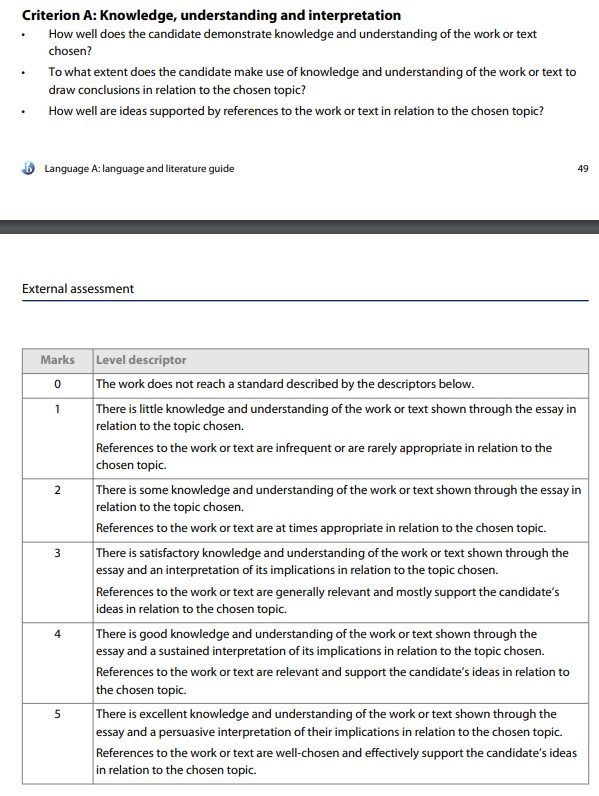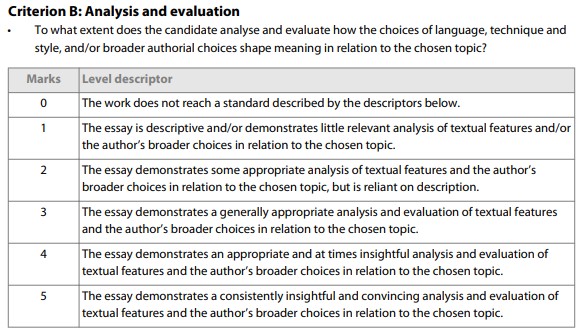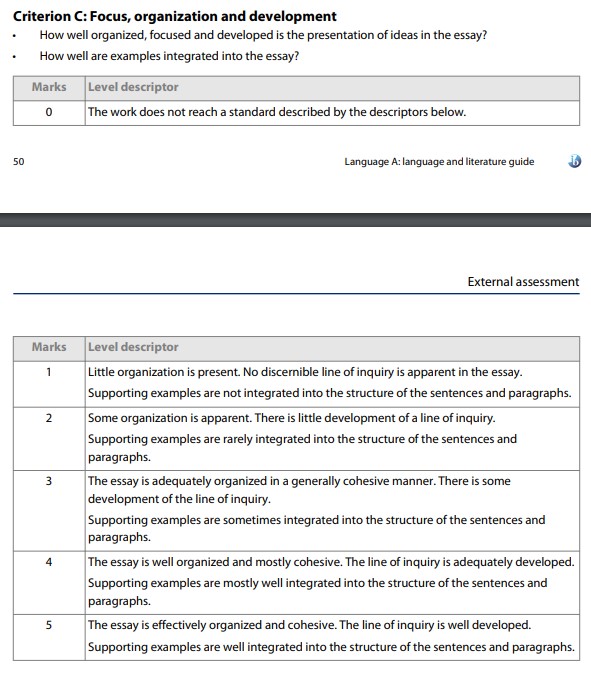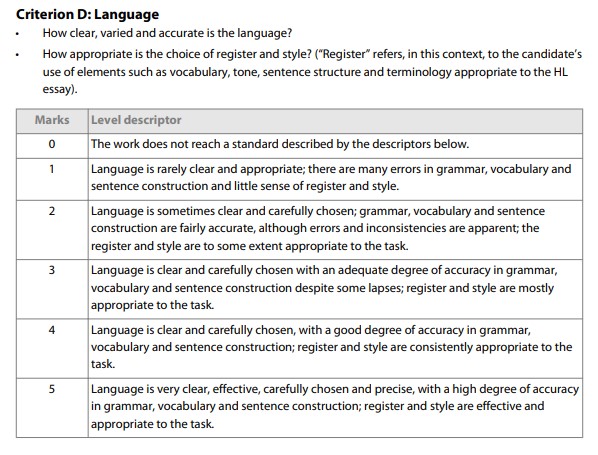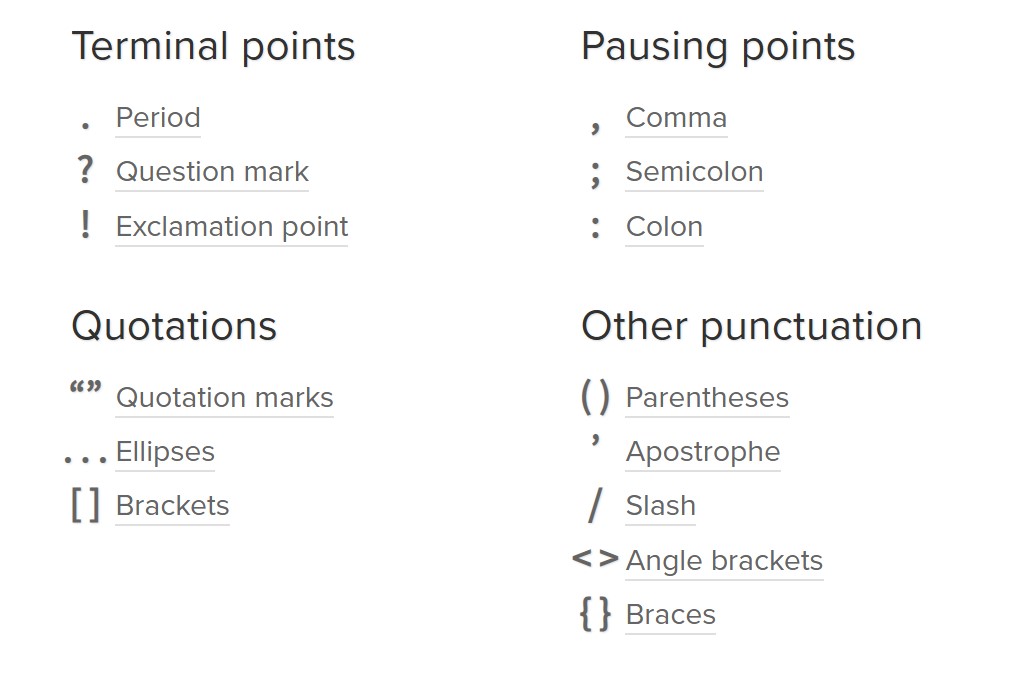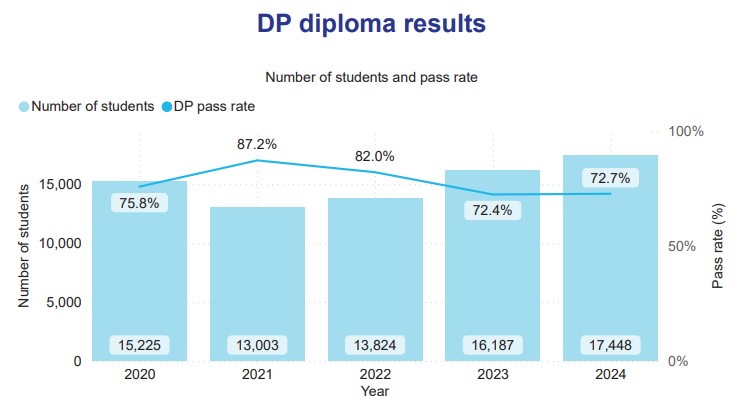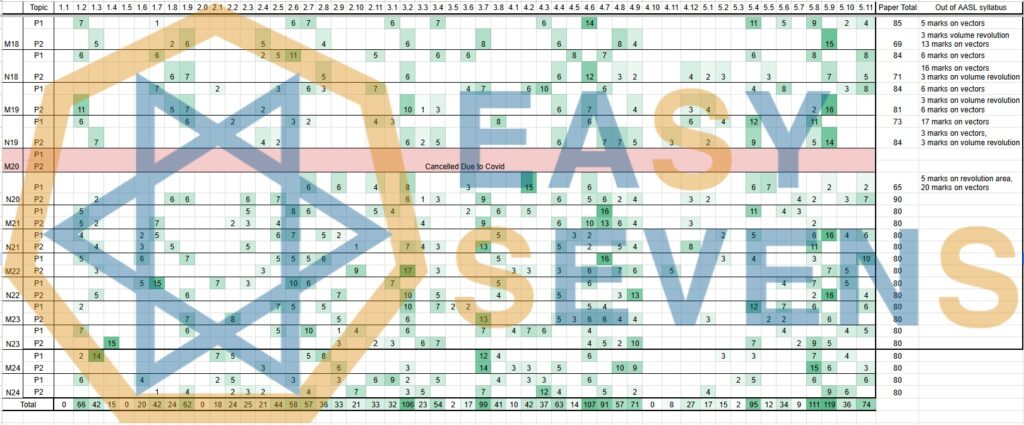The IB English HL Essay (HLE) is one of the most significant assessments in the International Baccalaureate (IB) English Language and Literature course. It’s a chance for students to demonstrate their deep understanding of literature, critical thinking, and the ability to construct a coherent, well-argued paper. While this essay offers a platform to showcase your knowledge, it can also be a daunting task. With its requirement for independent research, a complex analysis of literary texts, and the need for a clear, compelling argument, many students find themselves struggling to meet the high expectations set by the IB curriculum.
The key to excelling in the HL Essay lies in mastering several essential components: text selection, line of inquiry, analysis, and scope. Each of these elements requires careful thought and attention to detail. Choosing the right text, formulating a strong line of inquiry, conducting thorough analysis, and defining a manageable scope are all foundational steps in crafting a successful essay. With a deeper understanding of these components, you will be well-equipped to build a strong argument, offering an insightful exploration of the chosen literary work.
In this guide, our IB English tutor will dive into each step, providing practical tips and strategies to help you write a high-scoring HL Essay that demonstrates both your analytical skills and your ability to engage with complex texts.
2. Selecting Your Text for the HL Essay
One of the first and most critical steps in writing your IB English HL Essay is selecting the right text. The importance of this decision cannot be overstated. Your choice of text forms the foundation of your essay, influencing your analysis, argument, and ultimately, your grade. A poor selection can make the writing process feel laborious and uninspired, while the right text can ignite your creativity and lead to a compelling and insightful paper.
Don’t Choose the Easiest Option
It may be tempting to choose a text you are already familiar with, or one that seems “easier” to analyze. However, this approach can often backfire. When you pick a text simply because it feels like the “easiest” option, you may find yourself lacking the depth and passion needed to produce a high-quality essay. An essay that lacks complexity and meaningful analysis will not impress the examiner, no matter how straightforward it may seem at first.
Instead, choose a text that sparks your interest. A genuine passion for the work you are writing about will help you engage deeply with its themes and characters. The essay writing process will feel less like a chore and more like an intellectual exploration. In addition, a text you are passionate about will make it easier for you to connect your analysis with broader, thought-provoking ideas, which is a crucial element in crafting a high-scoring essay.
How to Choose Your HL Essay Topic
When it comes to selecting the text for your HL Essay, there are a few key factors to consider:
Reflect on Themes: Think about the themes that resonate with you. These could be anything from love and identity to power, memory, or the human condition. Themes that evoke strong emotional or intellectual responses are usually the best candidates for a deep analysis.
Consider the Text’s Complexity: Look for a text that offers enough complexity to support a rich, layered analysis. Literary works with intricate plots, multifaceted characters, and subtle themes allow for deeper discussion. Avoid texts that are too straightforward or simplistic, as they may not provide enough material for a well-rounded argument.
Fit with Course Content: Make sure the text aligns with what you’ve studied in class. It’s crucial that you have the background knowledge necessary to analyze the text effectively. The more you know about a text, the more insight you can bring to your analysis. At the same time, you don’t want to choose something you’ve analyzed extensively already, as this could limit your ability to offer fresh perspectives.
HL Essay Example Tip: Look for Texts with Rich, Complex Characters and Themes
One of the best ways to ensure that your chosen text will work well for your HL Essay is to focus on works that feature rich, complex characters and themes. These types of texts provide ample material for analysis, as you can explore character development, psychological depth, and thematic intricacies. For example, works such as Frankenstein by Mary Shelley or The Great Gatsby by F. Scott Fitzgerald offer multi-dimensional characters and themes like ambition, guilt, and the consequences of human actions. These works will allow you to delve into various facets of literary analysis, ensuring that your essay is both insightful and engaging.
By carefully choosing a text that you are passionate about and that offers ample material for analysis, you set the stage for a more enjoyable and successful HL Essay writing process. The next step is to define your line of inquiry, but before diving into that, take the time to consider your text carefully – it’s the first piece in the puzzle of your high-scoring paper.
3. Developing Your HL Essay Line of Inquiry
Your line of inquiry is the core question or focus that guides your entire HL Essay. It is the lens through which you approach your analysis, directing the depth and direction of your argument. A well-crafted line of inquiry sets the tone for your essay and helps you stay focused as you develop your argument. Without a clear line of inquiry, your essay can become unfocused and difficult to navigate, leaving both you and your reader lost in a sea of ideas.
Definition of Line of Inquiry
The line of inquiry is essentially the central idea or question that you want to explore in your essay. It’s what keeps your analysis grounded and on track. Your line of inquiry should be specific, thoughtful, and relevant to the text you’ve chosen. It should not be a broad or generic statement but rather a clear, concise question or topic that can guide your exploration of the text.
Guidance on Crafting Your Line of Inquiry
One of the best ways to craft a strong line of inquiry is to base it on one of the seven key concepts in IB English. These concepts provide a framework for thinking about literature and allow you to focus on significant aspects of the text that can support a thorough and insightful analysis.
Here are the seven key concepts you can consider when developing your line of inquiry:
- Identity: How do characters perceive themselves and others? What factors shape their sense of identity?
- Culture: How does the text reflect or critique cultural values and practices? What role does culture play in shaping the characters and their experiences?
- Creativity: How is creativity expressed within the text? What role does imagination or artistic expression play in the narrative?
- Communication: How do characters communicate with each other? What are the barriers to effective communication, and how do they affect the story?
- Transformation: How do characters or themes change throughout the text? What drives these changes, and what do they signify?
- Perspective: How does the author use different perspectives or narrative voices to tell the story? How do shifts in perspective affect our understanding of the text?
- Representation: How does the text represent certain groups or ideas? What do these representations reveal about the author’s views on social issues or human nature?
Each of these concepts can serve as the foundation for a compelling and insightful line of inquiry. By choosing one and crafting a question that connects it to your text, you’ll give your essay a clear direction and a strong basis for analysis.
Example: Crafting a Line of Inquiry For HL Essay
Let’s say you’re writing your HL Essay on The Things They Carried by Tim O’Brien. You could use the concept of Identity to shape your inquiry. One potential line of inquiry could be:
“How does the portrayal of war in The Things They Carried by Tim O’Brien challenge traditional notions of heroism?”
This question invites you to explore how the soldiers’ experiences in the Vietnam War reshape their understanding of what it means to be a hero. It focuses specifically on the theme of identity, asking how the characters’ perceptions of heroism are altered by their traumatic experiences in war.
This line of inquiry opens the door to a detailed analysis of the characters’ internal struggles, the influence of war on their sense of self, and how these experiences challenge conventional ideals of heroism.
4. Deep Dive: Applying Key Concepts to Your Text In Your HL Essay
Once you’ve established your line of inquiry, you can begin applying the relevant key concept to your chosen text. This process involves identifying key moments, characters, and themes in the text that relate to your concept and using them to develop your argument. Below is a breakdown of how to do this with Identity, using Frankenstein by Mary Shelley as an example.
4.1 Identity Example: Frankenstein by Mary Shelley
One of the most prominent concepts in Frankenstein is Identity. The exploration of identity is at the core of the novel, with both Victor Frankenstein and the creature grappling with their sense of self and the way they are perceived by society.
Concept Focus: Identity
In Frankenstein, the monster’s search for identity and belonging, contrasted with Victor Frankenstein’s own crisis of self-worth, provides a profound exploration of personal identity. The creature is rejected by society based on his appearance and monstrous deeds, forcing him to confront his sense of self and purpose. Meanwhile, Frankenstein’s guilt and fear shape his perception of who he is as a creator and as a man. Both characters’ identities are shaped by their interactions with others and their own internal struggles.
Description: The Monster’s Search for Identity
The monster’s journey is one of searching for meaning and acceptance. From his first moments of life, he is abandoned by his creator and scorned by society for his hideous appearance. His quest for identity is complicated by his isolation and the rejection he faces at every turn. This alienation leads him to question his very existence and his purpose.
On the other hand, Victor Frankenstein’s identity is also deeply tied to his creation. He seeks to overcome death and defy the natural order, but in doing so, he loses his sense of responsibility and self-worth. His horror upon seeing the creature symbolizes his inability to reconcile his intellectual ambitions with the reality of his actions.
Key Quote:
“I had worked hard for nearly two years, for the sole purpose of infusing life into an inanimate body. For this I had deprived myself of rest and health. I had desired it with an ardour that far exceeded moderation; but now that I had finished, the beauty of the dream vanished, and breathless horror and disgust filled my heart.” (Frankenstein, Chapter 5)
Analysis: Identity Crisis and Self-Perception
This quote reflects Victor’s inner turmoil and rejection of the creature he created. His fear of the creature and his horror at what he has done mirror his inability to accept responsibility for the creation of life. This fear represents a rejection not only of the creature but also of his own role in shaping that creature’s identity. Victor’s failure to create life in an idealized way highlights the tension between his aspirations and the harsh reality of his actions, reinforcing the theme of identity crisis.
Similarly, the creature’s search for identity is shaped by the way he is viewed by others. His monstrous appearance forces him into isolation, and as he becomes more aware of his difference from humans, he struggles to define himself. The rejection by society and his creator fuels his desire for revenge, making identity a central theme in his journey.
By examining how identity plays a pivotal role in the lives of both Victor and the creature, we gain a deeper understanding of the ways in which personal identity is shaped by external perceptions, internal conflicts, and societal rejection.
4.2 Creativity Example: The Handmaid’s Tale by Margaret Atwood
In Margaret Atwood’s The Handmaid’s Tale, creativity plays a crucial role in both the narrative structure and the survival mechanisms of the characters. The dystopian society of Gilead is built on rigid rules and an oppressive use of language, yet it is through the creative manipulation of language and storytelling that the protagonist, Offred, is able to assert her autonomy and resist the totalitarian system.
Concept Focus: Creativity
Creativity in The Handmaid’s Tale is expressed in multiple ways, particularly through language and storytelling. Offred’s internal monologue becomes a space for creative resistance, as she reflects on her life, her experiences, and the stories she tells herself to make sense of her oppressive reality. The regime’s control over language is central to its power, and Offred’s ability to use language to reimagine her circumstances becomes a subtle yet powerful form of rebellion. Furthermore, the way Gilead alters language—such as the use of euphemisms like “Ceremony” to mask the brutal realities of sex and reproduction—reflects the dystopian manipulation of truth and reality.
The alteration of language in the novel serves not just as a method of control but also as a tool of resistance. Offred’s act of recalling the past, telling stories, and even inventing her own narratives is her way of asserting her humanity and resisting the societal pressures placed on her. In a world where creativity is stifled, her use of imagination becomes a crucial lifeline.
Key Quote:
“Better never means better for everyone… It always means worse, for some.”
(The Handmaid’s Tale, Chapter 32)
Analysis: Language as a Creative Tool for Resistance
This quote encapsulates the central theme of manipulation and control within Gilead. Atwood’s use of language as a creative tool emphasizes how dystopian societies can manipulate communication to redefine reality. In this society, words are twisted and given new meanings to uphold the regime’s power—”Ceremony” becomes a euphemism for the ritualized rape of the Handmaids, for example. The very act of altering language itself is an act of creative control, one that forces the people of Gilead to live in a warped version of reality.
Offred’s internal reflections, often framed in the form of memories or fleeting imaginings, are not just acts of nostalgia; they are moments of creativity and resistance. Her ability to reflect critically on her environment, even within the oppressive boundaries of Gilead, reflects her resistance. Creativity in this context is not limited to artistic expression—it extends to the way people use language and think in order to preserve their sense of self and individuality. By thinking creatively, Offred is able to confront and challenge the totalitarian order that seeks to suppress her.
Atwood cleverly uses language as a metaphor for the way creativity can be both suppressed and utilized as a tool for survival. Even in the most oppressive environments, creativity in thinking and in the use of language can become a subtle form of rebellion and a means of retaining personal agency.
4.3 Representation Example: Beloved by Toni Morrison
Toni Morrison’s Beloved provides a powerful exploration of the representation of trauma, history, and identity, particularly through the African American experience in the aftermath of slavery. In the novel, the character of Sethe embodies the deep psychological scars left by slavery, while the haunting presence of Beloved—who manifests as a literal ghost—symbolizes the inability of the past to be forgotten. Morrison’s use of representation in Beloved explores how history and trauma shape personal and collective identity.
Concept Focus: Representation
In Beloved, Morrison masterfully represents the lingering impact of slavery on both the individual and the community. Sethe’s past and the traumatic memories of her time as a slave are not just personal experiences; they are reflections of the collective trauma experienced by African Americans post-slavery. The character of Beloved serves as a haunting representation of this trauma, refusing to be dismissed or forgotten. The novel grapples with how the past continues to shape and inform the present, particularly when it comes to the trauma of slavery.
Beloved is not just a character—she is a symbol of history, trauma, and the psychological scars left by generations of enslavement. The entire novel can be seen as an exploration of how trauma is represented and how the past cannot simply be buried. The character of Sethe, who killed her child rather than allow it to be enslaved, represents the devastating choices individuals must make in the face of an oppressive system. The haunting of Beloved represents the broader idea that trauma, particularly the trauma of slavery, can never be fully erased—it continues to reverberate through the lives of those who lived through it and their descendants.
Key Quote:
“124 was spiteful. Full of a baby’s venom.”
(Beloved, Chapter 1)
Analysis: The House as a Representation of Trauma
This iconic opening line sets the tone for the novel’s exploration of trauma. The house at 124, where Sethe and her family live, is described as being “spiteful” and “full of a baby’s venom.” This is not just a description of a haunted house; it is a representation of the psychic and emotional burden left by the horrors of slavery. The house, haunted by the spirit of Sethe’s deceased child, becomes a literal manifestation of the past that refuses to be buried. It symbolizes the trauma that continues to haunt Sethe, her family, and the African American community as a whole.
The ghost of Beloved represents the lingering effects of slavery on the individual psyche. She is the embodiment of the unacknowledged and unresolved pain of slavery, a past that refuses to be forgotten and demands confrontation. As Sethe and the community struggle to deal with the presence of Beloved, they are forced to confront the unresolved trauma of their collective history.
Through the character of Beloved, Morrison highlights the concept of representation as a means of reckoning with historical trauma. The past is not something that can simply be erased or forgotten. It continues to shape the identities of those who have lived through it and those who inherit its legacy. The haunting presence of Beloved serves as a reminder that trauma, in whatever form it takes, cannot be ignored—it must be acknowledged and understood in order for healing to occur.
5. Refining Your Line of Inquiry and Scope
After crafting your initial line of inquiry, the next crucial step is to refine it and establish a clear scope for your essay. Your scope defines the boundaries of your analysis, helping to ensure that your argument remains focused and manageable within the confines of the essay’s word limit.
Choosing a Good Scope
It’s essential to strike the right balance when determining your scope. A scope that’s too broad or too narrow can either overwhelm your argument or limit its depth.
Avoid a Too-Broad Scope
A line of inquiry that is too broad can cause you to cover too much material, making it difficult to provide a thorough analysis. When your scope is too wide, you risk glossing over important points or providing superficial commentary on many different aspects without delving into any of them in depth.Example of a Too-Broad Scope:
- “How does The Catcher in the Rye explore the theme of alienation?”
While this is an interesting and relevant topic, it’s too broad because alienation is a central theme in the novel, and there are countless ways to explore it. This would likely lead to a scattered argument, and you’d struggle to provide meaningful analysis on all aspects of alienation in the novel within the word limit.
Avoid a Too-Narrow Scope
On the other hand, a scope that is too narrow can limit your ability to draw meaningful conclusions. If you focus on a tiny, irrelevant detail, you risk spending too much time analyzing something that doesn’t contribute significantly to your argument.Example of a Too-Narrow Scope:
- “How does Holden Caulfield’s relationship with his sister Phoebe contribute to his alienation in The Catcher in the Rye?”
While this is a specific aspect of the text, it’s too limited because it ignores the larger idea of alienation and doesn’t connect deeply with the broader themes of the novel. A narrow focus might prevent you from engaging with the full complexity of the text.
Just Right: Finding the Ideal Scope
The key is to find a balance—a scope that is specific enough to allow for in-depth analysis, but broad enough to connect with the key themes and arguments of the text. Your scope should allow you to explore your line of inquiry thoroughly and give you the space to make meaningful connections.Example of a Just Right Scope:
- “How does Holden Caulfield’s perception of phoniness contribute to his overall sense of alienation in The Catcher in the Rye?”
This is a focused, clear, and manageable line of inquiry. It zeroes in on a specific aspect of Holden’s character (his perception of phoniness) while connecting it to the larger theme of alienation. This scope allows for deep analysis of Holden’s psyche and his critique of society while keeping the argument within a clear, focused framework.
When refining your line of inquiry and scope, always ask yourself: Does this question allow me to analyze the text deeply and comprehensively within the word limit?
6. Crafting a Strong Analysis
In an HL Essay, analysis is the heart of your argument. It’s not enough to simply summarize the text or describe what happens. To truly excel, you need to engage deeply with the text, unpacking the author’s choices, literary devices, and themes to build a compelling, well-supported argument.
The Key to Success: Analysis
Good analysis goes beyond summarizing what happens in the text. Instead, it requires you to engage with the text on a deeper level, showing how the author’s choices contribute to the larger themes, characters, and ideas explored in the work. Here’s how you can approach your analysis effectively:
Examine Literary Devices
Literary devices such as symbolism, metaphors, imagery, and allusions are crucial to understanding the deeper meaning of a text. Analyzing how these devices are used will help you understand the author’s intentions and the layers of meaning embedded in the text.For example, in Frankenstein, the use of light and darkness can symbolize knowledge and ignorance. By examining how the author uses these symbols throughout the novel, you can reveal deeper insights into the characters’ internal struggles and the moral implications of scientific discovery.
Look at Tone and Characterization
Tone refers to the emotional quality of the writing, while characterization deals with how the author presents and develops characters. Both of these aspects are vital for building a nuanced analysis.In The Handmaid’s Tale, the tone is often bleak and oppressive, which mirrors the grim world of Gilead. Analyzing how Atwood uses tone to communicate the severity of the regime will give you insight into the emotional undercurrents of the novel. Similarly, Offred’s characterization as a quiet yet resilient narrator allows readers to see the power dynamics of Gilead through her perspective.
Connect Every Point to Your Main Argument
Your analysis should always tie back to your line of inquiry and your main argument. Don’t get lost in a sea of observations about the text; each point should support your thesis and add depth to your argument.For example, if your argument is about how Holden’s perception of phoniness contributes to his alienation, you might analyze how his interactions with other characters (such as his encounter with his teacher Mr. Antolini) demonstrate his mistrust of society and his resulting isolation. Each piece of evidence should serve to develop your main point, not distract from it.
Tips for Strong Analysis
To craft a strong, insightful analysis, consider the following tips:
Use Textual Evidence Effectively
Always back up your analysis with specific examples from the text. Quotes, passages, and key scenes should be used to support every point you make. Make sure to explain how these examples tie into your overall argument and reveal deeper meanings.For example, in Beloved, the quote “124 was spiteful. Full of a baby’s venom” is a powerful image that symbolizes the trauma Sethe faces. Analyzing how this representation of the house shows the lasting impact of slavery on Sethe’s psyche can help you develop a rich, insightful argument.
Show the Connection Between the Author’s Choices and the Theme
In order to link your analysis to your main argument, you should explore how the author’s literary choices contribute to the development of themes. How does the use of a particular symbol, the choice of narrative voice, or the tone of a scene further illuminate the key concepts you’re analyzing?In The Handmaid’s Tale, for example, Atwood’s choice of language—specifically the euphemistic term “Ceremony”—reveals the regime’s attempt to control not only physical acts but also the way people think about them. This connects to the larger theme of how oppressive systems manipulate truth and identity.
7. Structuring the HL Essay
A well-structured essay is key to presenting your argument clearly and persuasively. Here’s a breakdown of how to structure your IB English HL Essay for maximum effectiveness:
HL Essay Introduction Structure
The introduction is your first opportunity to grab the reader’s attention, so it’s important to set the right tone and provide necessary context. A strong introduction will set the stage for your essay, introduce your line of inquiry, and lay the foundation for your argument.
- Set the context: Provide a brief background on the text you are analyzing, including its key themes or any relevant historical/cultural context.
- Thesis statement: Clearly state your line of inquiry (your main argument or focus) and briefly outline the direction your essay will take. This will act as a roadmap for your reader, indicating the points you will discuss.
- Main points: Summarize the main ideas or arguments you’ll explore in the body paragraphs. This gives the reader a preview of how you will support your thesis.
Example Introduction:
In Margaret Atwood’s The Handmaid’s Tale, language and creativity are central to the protagonist’s survival in a totalitarian regime. Atwood uses language as a tool of control, but also as a means of resistance. Through the protagonist, Offred, the novel explores the connection between creativity and rebellion, illustrating how personal agency can be maintained even in the most oppressive societies. This essay will explore the role of creativity in shaping Offred’s resistance, examining key moments where language and storytelling provide her a means of survival and assertion of selfhood.
HL Essay Body Paragraphs Structure
Each body paragraph should focus on a single idea or aspect of your argument. The body is where you will do the heavy lifting, supporting your thesis with evidence from the text and your analysis. The structure of each paragraph should be clear and logical.
- Topic sentence: Start each paragraph with a clear topic sentence that introduces the point you will discuss. This keeps your essay focused and ensures the reader knows exactly what each paragraph is about.
- Textual evidence: Use direct quotes or examples from the text to support your analysis. Make sure the evidence you present is relevant and compelling. Quotes should be well-integrated into your argument and not stand alone.
- Analysis: Analyze how the evidence supports your line of inquiry. Discuss the author’s choices (e.g., symbolism, characterization, tone, etc.) and explain how they contribute to your argument. Always connect your points back to your thesis.
- Coherence: Ensure each paragraph flows smoothly into the next. Use transitions between paragraphs to guide your reader through your argument and keep your essay cohesive.
Example Body Paragraph:
In The Handmaid’s Tale, Offred’s internal monologue is a significant form of creative resistance. Her reflections on the world around her, particularly her memories of the past, offer a subtle defiance against the oppressive regime of Gilead. When she recalls the time before the regime took hold, she is not simply indulging in nostalgia; rather, she is actively resisting the loss of her identity and agency. Atwood’s use of Offred’s memories—often fragmented and fleeting—illustrates how creativity and self-reflection serve as acts of rebellion in a society where free thought is suppressed. As Offred says, “Better never means better for everyone… It always means worse, for some” (Atwood, Chapter 32). This quote reflects her awareness of the ways in which Gilead’s oppression creates a false sense of equality while disenfranchising its citizens. By holding on to these creative memories, Offred retains control over her inner world, which Gilead cannot dictate.
HL Essay Conclusion Structure
The conclusion should wrap up your essay by restating your thesis and summarizing the key points you’ve made. You should also reflect on the broader significance of your analysis and show how it contributes to a deeper understanding of the text.
- Restate your thesis: Begin your conclusion by rephrasing your thesis statement to remind the reader of your main argument.
- Summarize key points: Briefly summarize the key points you discussed in your body paragraphs. This helps to reinforce your argument and reminds the reader of the evidence you presented.
- Broader implications: End with a final thought on the broader implications of your analysis. How does it enhance our understanding of the text or contribute to the broader conversation about the theme or topic? You may also want to consider how your analysis might connect to other works or real-world issues.
Example Conclusion:
In conclusion, creativity in The Handmaid’s Tale is not merely a form of artistic expression, but a crucial tool for survival and resistance against an oppressive regime. Through Offred’s internal monologue and reflections, Atwood illustrates how personal agency can be preserved through creative acts of defiance. By reimagining the world through her memories and internal storytelling, Offred maintains a semblance of freedom, even as the totalitarian regime seeks to control every aspect of her life. Atwood’s novel underscores the power of creativity to challenge authority and retain one’s sense of self in the face of overwhelming oppression. In this way, the novel offers a compelling exploration of how language and imagination serve as forms of resistance.
8. Final Tips for a 7 on Your IB English HLE
Achieving a top score on your HL Essay requires more than just a good understanding of the text—it demands a strong, structured argument, deep analysis, and attention to detail. Here are some tips to ensure your essay reaches its highest potential:
1. Start Early
Procrastination can be your worst enemy when writing an IB English HL Essay. Start early so you have enough time to reflect, refine, and revise your ideas. This will give you the opportunity to refine your analysis and avoid rushed writing.
2. Refine Your Analysis
The key to a high score is deep, insightful analysis. Don’t simply summarize the text—examine the author’s choices, the literary devices used, and how they contribute to the overall themes. Challenge yourself to think critically about the text and its broader implications.
3. Use a Variety of Sources
Incorporating external sources like Goodreads reviews, LitCharts summaries, or academic journals can help expand your perspective and deepen your analysis. Just make sure to focus on direct quotes from the text and ensure that any additional sources are integrated smoothly into your argument.
4. Understand the Rubric
Familiarize yourself with the IB English HL Essay rubric. Knowing the criteria examiners use to grade your essay will give you clear guidance on what is expected in terms of structure, analysis, and argumentation. Aim for clarity, depth, and strong textual evidence.
5. Stay Focused
Your essay should have a clear focus from start to finish. Don’t veer off-topic or overwhelm the reader with irrelevant details. Make sure each paragraph and sentence contributes to building your overall argument.
Writing a high-scoring IB English HL Essay is a challenging but rewarding task. By selecting the right text, developing a strong line of inquiry, and offering deep, focused analysis, you can craft an essay that demonstrates both your understanding of literature and your ability to think critically. Remember, this essay is an opportunity to showcase your skills as a literary analyst. Don’t rush—take your time, refine your argument, and engage deeply with the text. By doing so, you’ll be well on your way to achieving your best possible result. Good luck!
Frequently Asked Questions (FAQ)
When selecting a text, it’s important to pick one that genuinely interests you. Look for texts that offer rich, complex themes and characters. This will make your writing process more enjoyable and give you ample material to analyze. Avoid choosing the easiest text; instead, focus on one that allows for a deep, thoughtful exploration of your chosen line of inquiry.
A line of inquiry is the central question or focus of your essay that guides your analysis. To develop it, consider the key concepts from the IB English curriculum (like identity, culture, or creativity) and choose one that resonates with your text. Frame a specific question that allows you to explore these concepts in relation to your text, ensuring it is narrow enough for in-depth analysis but broad enough to support a compelling argument.
To avoid a too-broad scope, focus on a specific aspect of your chosen text and how it relates to your line of inquiry. A broad question like “How does The Catcher in the Rye explore alienation?” is too general. Instead, focus on a more specific angle, such as “How does Holden Caulfield’s perception of phoniness contribute to his sense of alienation?” This way, you can dive deep into a manageable aspect of the text without losing focus.
A strong analysis goes beyond summarizing the text. It examines the author’s literary choices—like tone, symbolism, and characterization—and explains how these choices contribute to the text’s themes and the argument you’re making. Always connect each point back to your thesis and ensure that textual evidence is effectively integrated to support your analysis.
To score highly, start early and give yourself time to refine your analysis. Familiarize yourself with the IB rubric to understand what examiners are looking for. Use a variety of sources for context and support, and make sure each paragraph contributes to your central argument. The more focused and insightful your analysis, the better your chances of achieving a top score.


